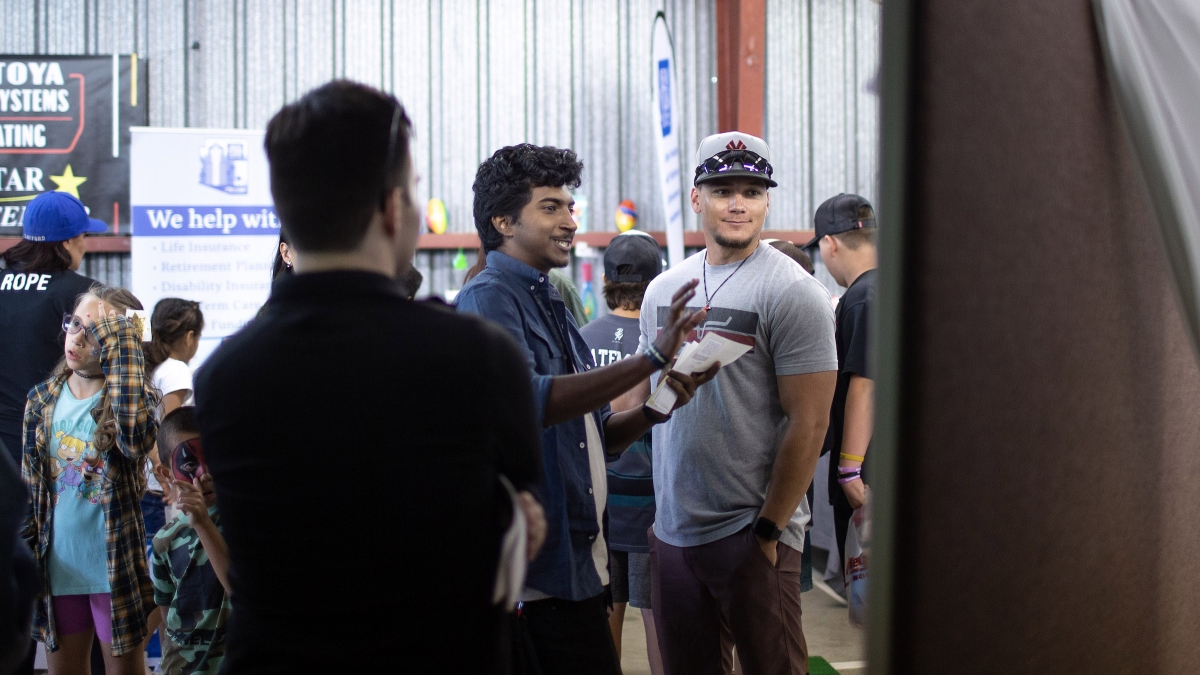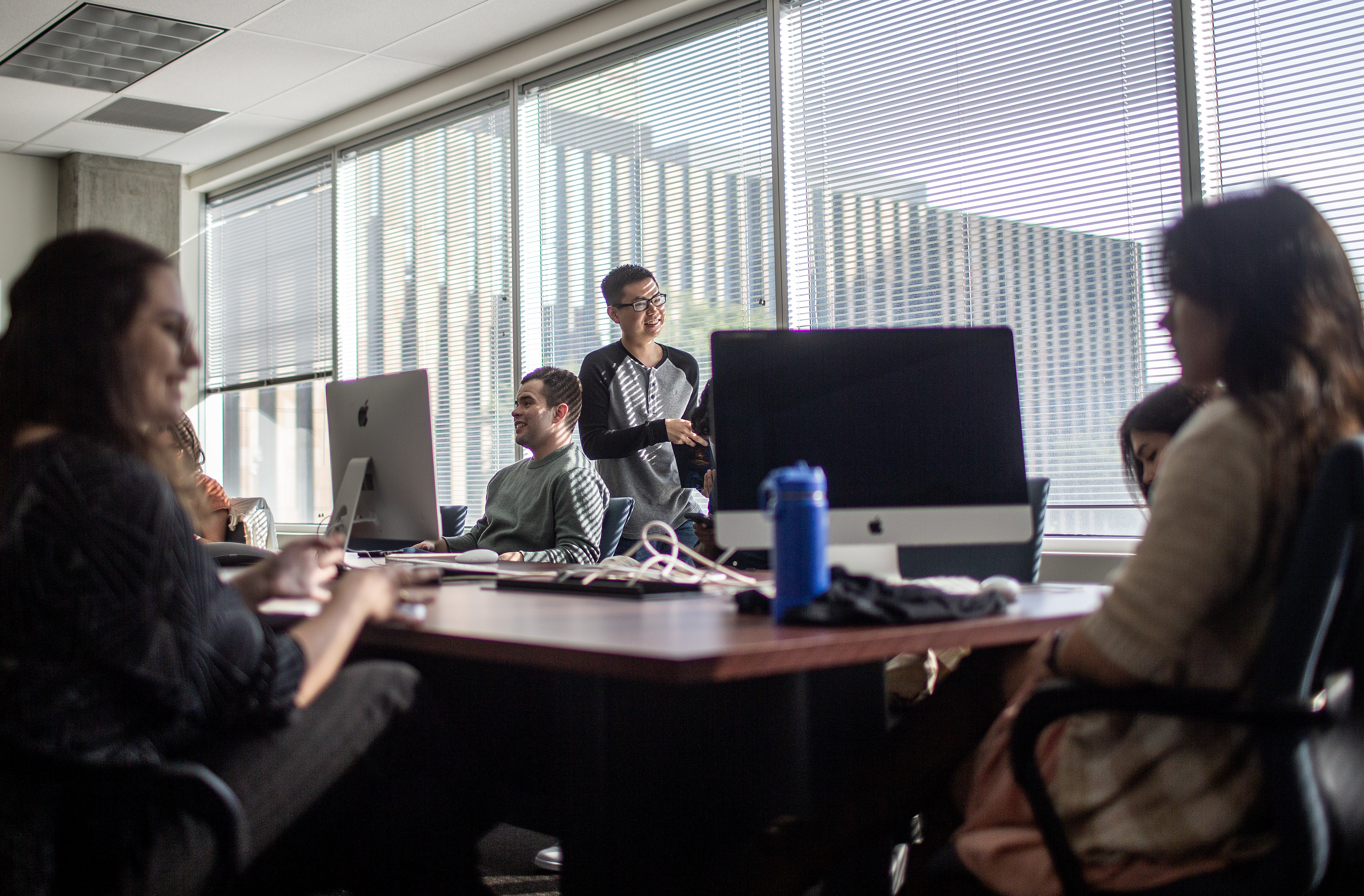Local news is in a tough spot — it’s still desired by readers but due to funding cuts and consumer reliance on the internet, it’s become more difficult for the newspaper industry to deliver.
In response to this, an Arizona State University student-led project has developed ideas for local news organization Wick Communications on how to engage the community in deciding how they receive local news, how to better diversify their content and how to alleviate concerns about misinformation.
The Voices Listening Project spent a year researching and analyzing various methods of news delivery in smaller Arizona communities with circulations of less than 50,000. The project wrapped in December 2022, and now those results are being shared within the industry and implemented for Wick’s readers.
“Audiences’ media habits are always evolving, and the news industry — especially local news — has had trouble keeping up and meeting people’s information needs in formats that are useful to them,” said Kristy Roschke, managing director of the News Co/Lab, a media literacy initiative housed in the Walter Cronkite School of Journalism and Mass Communication at ASU. “Our research confirmed that people still rely on local news to keep them informed but are not always satisfied with what is available in their community. We recognized this as an opportunity to develop new ways to provide credible, trusted local news for diverse news audiences.”
The project commenced in 2021 thanks to $160,000 in funding from the Google News Initiative’s North America Innovation Challenge.
With the funding in place, Wick Communications and the News/CoLab assembled a multidisciplinary student research team across the fields of journalism, communications, engineering, user experience and sustainability to study online news consumption and misinformation in Arizona.
“Despite the fact that Wick Communications has been a leader in testing new digital journalism products, our smaller size has made it difficult to get the attention of creative young talent within our industry,” said Sean Fitzpatrick, digital director at Wick, a family-owned community media company based in Sierra Vista, Arizona. “Our collaboration with Cronkite gave our own young, talented digital audience editor — Cronkite alumnus Reilly Kneedler — the opportunity to facilitate some of the most diverse and energetic young minds in journalism and product design at Cronkite to identify better news and information strategies for the small communities we serve in Arizona.”
Leaders from the News Co/Lab and Wick oversaw the project and provided training and guidance for the students. This included frequent brainstorming community visits, research and analysis, and product iterations to improve the reader experience.
The team, which consisted of ASU students, Wick product experts and Cronkite School faculty, extracted most of its research and information by focusing on three communities in Arizona: urban Tucson, rural Safford and Maryvale, a diverse, traditionally underserved pocket of metro Phoenix.
Cronkite students Daniel Ogas (center left) and Mingson Lau (center right) meet with other members of the Voices Listening Project team on Dec. 2, 2022. The interdisciplinary team of ASU students worked closely with journalists, product designers and researchers from Wick Communications and the Cronkite School during the yearlong project. Photo courtesy Wick Communications
Over the course of the year, the students learned skills such as empathy interviewing, product development, survey creation and prototyping from the journalism and research experts at Cronkite and Wick.
The team collected more than 1,600 survey responses and conducted over 200 virtual and in-person interviews. Those insights were used to inform their findings as well as design a line of innovative media literacy products. Products were aimed at helping people better understand the news process and their own news habits, highlighting credible news content and gaining audience trust.
The strength of the project came from the students’ fresh perspectives and honoring the communities involved, said Celeste Sepessy, an assistant teaching professor at the Cronkite School.
“Even though our students were learning, they were also teaching us about their own experiences as news creators and consumers,” said Sepessy, who is also a program manager at the News/Co Lab and served alongside Roschke as an advisor on the project. “They have a wealth of ideas about how they want to consume news, including which are good ways of doing that and which ways are outdated. This really opened my eyes in terms of putting the ball in their court. Giving students the power to be proactive instead of reactive felt really powerful to me.”
The project’s findings show that while most news consumers are informed about their communities, local journalists must diversify content to gain community trust.
“Based on our research, the media could do a better job of communicating their information and utilizing platforms available to them to deliver a set or sets of information,” said Mingson Lau, a journalism major at the Cronkite School. “That should be our No. 1 priority, even though it seems like a simple thing.”
The team concluded in a white paper that beyond their typical reporting duties, readers would benefit greatly when local news offers more perspectives, greater context and potential solutions. This would present a more well-rounded picture of a source or event rather than assert themselves as the singular source of local news.
“We write and post our articles from our official brand pages, and we have verified accounts that interact with one another, but very commonly it’s a one-way conversation,” Kneedler said. “It’s a news organization saying, ‘Hey, we think this is important and you should read it.’ You read it but then move on to the next story, but there should be something in between that allows for a two-way dialogue.”
One of the solutions to fill that gap was a community forum where reporters and news consumers can interact to host “civil conversations,” said Rocky Baier, Wick Communications’ product manager for community research.
“This would help reduce misinformation and help build trust with the community to improve civic engagement,” Baier said. “Our goal is to have newsrooms take from what we’ve learned and incorporate it for their own use. There’s a lot of space for innovation in this field, which is what we wanted to impart to the students here.”
One of the product prototypes students developed based on survey and interview responses is a “Reporting Process” text block, which offers readers a high-level summary of the steps the reporter took to source their article, and includes similar articles and a brief bio on the writer. The goal of providing this information in-article is to demonstrate more transparency to the reader. The product was well received by local news users who tested it. Wick Communications is incorporating that feature into websites of the Eastern Arizona Courier in Safford, Arizona, and the Green Valley News/Sun in Green Valley, Arizona.
To address the consumer’s perspective, Maria Manoag, a user experience master’s degree student in the Ira A. Fulton Schools of Engineering, helped design a browser extension to show readers their own news consumption history. The tool would also allow users to fact-check information right in the browser extension.
“It was a holistic design approach to enhance the user’s experience once they clicked on an article,” Manoag said. “It’s a way to show the reader the facts and verify the story. I’m not in journalism, but I really enjoyed being able to apply my skills to an actual real-world problem.”
Another key finding was that readers wanted to see a more balanced mix of community news — news that is less focused on crime and local politics and more focused on community events and solutions to local issues. In Maryvale, where many Spanish speakers live and work, the focus on negative news has led to a decrease in local news consumption. Instead, they rely on television stations like Telemundo and Univision to give them what they are looking for.
“The Latino community is tired of reading about tragedies and bad things happening all around them, and some are losing interest in the news,” said Somaly Jaramillo Hurtado, a Spanish-speaking sustainability doctoral student. “They are more interested in positive content about their community and neighborhoods. They want to know about roads and safety because there are a lot of accidents. And they are interested in learning about community safety for their kids.”
In addition to the research white paper, the team has turned their findings into an open-source syllabus for 101-level, research-driven product design for journalists, making it available for classroom or newsroom use at the Voices Listening Project website.
Abhijith Ajith, a computer interaction master’s degree student at the Ira A. Fulton Schools of Engineering, said this was not only his first brush with journalism but his first job in Arizona.
“I had to step out of my comfort zone with this project in many ways,” said Ajith, who estimates he worked 15–20 hours a week on product designs. “The challenge was understanding all these new designs and then putting them forward in a way that is user-friendly to the consumer. … This is a new door to online journalism.”
Top photo: Abhijith Ajith (center), an ASU graduate student studying user experience, speaks with community members at the Graham County Fair in Safford, Arizona, on Oct. 7, 2022. Researchers from the Voices Listening Project, a yearlong initiative, attended the event to gather feedback about residents’ social media use and online news consumption habits. Photo courtesy Wick Commuications
More Law, journalism and politics
Can elections results be counted quickly yet reliably?
Election results that are released as quickly as the public demands but are reliable enough to earn wide acceptance may not always be possible.At least that's what a bipartisan panel of elections…
Spring break trip to Hawaiʻi provides insight into Indigenous law
A group of Arizona State University law students spent a week in Hawaiʻi for spring break. And while they did take in some of the sites, sounds and tastes of the tropical destination, the trip…

LA journalists and officials gather to connect and salute fire coverage
Recognition of Los Angeles-area media coverage of the region’s January wildfires was the primary message as hundreds gathered at ASU California Center Broadway for an annual convening of journalists…



